What AI and Youngkin's 2021 Win Can Teach Us About the 2025 Virginia Governor's Race
Comparing Youngkin's 2021 polling to Spanberger's 2025 lead reveals what the numbers say about Virginia’s governor’s race.
It’s an “off year” in politics, meaning we don’t have too much to discuss right now outside of watching trends and keeping tabs on how upcoming national elections are shaping up.
What we do have this year are key races for Governor in Virginia and New Jersey, along with a closely-watched race for Mayor in New York City. We will touch on each of these subjects in upcoming stories, but let’s start in the Old Dominion with a look at the battle to succeed Republican Gov. Glenn Youngkin in Richmond.
The 2025 race has come down to Abigail Spanberger, Democrat and ex-Congresswoman, against Virginia’s current Republican Lieutenant Governor, Winsome Earle-Sears.
Brief History of Virginia Governors’ Races
Virginia can be notoriously difficult to poll and predict, with final race margins often showing an overly friendly bias in favor of Democrats.
This was no better demonstrated than in 2013, when at least one poll had Republican Ken Cuccinelli down as many as 12 points just days before Election Day. The final margin was a Cuccinelli loss to Democrat Terry McAuliffe by just over 2 points. A ten-point polling miss.
Then there’s 2021, where polls consistently showed Terry McAuliffe, running for his second non-consecutive term, ahead of Glenn Youngkin throughout most of the summer and fall until the race shifted. At this same time, around August, McAuliffe was leading Youngkin by 8 points according to Roanoke College. Youngkin went on to win the race by nearly 2 points, indicating another ten-point miss by the summer polls, this time working against Democrats. It must be noted that the Youngkin-McAuliffe polls tightened significantly in September and October, but August polls were giving Democrats reason to pop the champagne.
This dynamic has cemented somewhat of a predictable bias for Democrats built into Virginia polling. This is not the case with every poll, but with the blue-leaning populated counties of Northern Virginia and the Richmond area making up a majority of voters who tend to be most open to answering pollsters, the state is strangely difficult to survey.
Another point worth making is that, more often than not, the party that wins the White House typically loses statewide offices in Virginia the following year. See 2009, 2017, and 2021 for prime examples. In 2013, though Democrats won the White House the year before with Barack Obama’s re-election, Virginia Republicans never coalesced around Cuccinelli, leading to a break in the trend.
In 2025, we can expect Democrats to start with this historical enthusiasm advantage of their voters and left-leaning independents eager to vote against the new party in power. Virginia Republicans, meanwhile, having just won the presidency in November 2024, will be slightly more complacent heading into November 2025.
2025: Spanberger vs. Earle-Sears
With all that said, what can we learn about the 2025 Spanberger-Sears battle through the lens of previous trends?
Well, for starters, Sears is in a pretty deep but not insurmountable hole. According to polling done up to this point, Spanberger is sitting in a comfortable position somewhere more akin to 2013 McAuliffe than 2021 McAuliffe.
Now that we’ve set the context, let’s bring in the panel and see what the top AI models think about the direction of the race.
AI Model - 2025 Virginia Governor - Earle-Sears (R) vs. Spanberger (D)
We prompted four of the top AI models the same basic question: Based on current trends, polls, and fundraising, which candidate (Earle-Sears or Spanberger) is most likely to win in November?
Keep in mind this is merely chance of winning, not a projected vote share, so do not read it as Spanberger is projected or predicted to win with 68% of the vote.
Broken down by model, Grok and Gemini are a little friendlier to Sears, but Claude is not seeing much hope for the Virginia holding red.
AI Model - 2025 Virginia Governor - Earle-Sears (R) vs. Spanberger (D) - Based on 2021 Electorate
What if the electorate voted like it did back in 2021? If the same Youngkin coalition showed up in force, would Spanberger go down like McAuliffe?
The numbers in this scenario indicate more of a toss-up with a slight edge for Sears. In this case, Spanberger would only have around a 42% chance of winning.
If voters turnout for Sears like they did for Youngkin four years ago, the race will be extremely tight, but the Lieutenant Governor might have a chance to keep this seat in Republican hands.
Here’s the model-by-model breakdown on the question of a 2021 electorate in 2025:
The path for Sears goes through reassembling the Youngkin coalition, boosting Republican enthusiasm, and hoping for Spanberger to make a critical error in the final stretch like Terry McAuliffe did in 2021.
AI Model - 2025 Virginia Governor - Earle-Sears (R) vs. Spanberger (D) - Based on 2021 Polling Trend
Based purely on the polling trend alone, when directly compared to polls at this same time in 2021, Spanberger is likely to prevail in November.
The difference between then (August 2021) and now (August 2025) is that Spanberger is polling better than McAuliffe was during the same period. This isn’t to say Sears can’t win since it’s still quite early. However, Spanberger is ending the summer in a stronger position than her predecessor four years ago.
The model breakdown shows how the various platforms view current polls in relation to four years ago. For example, Gemini and Claude would basically call the race over, while Grok likely sees an inherent Dem-leaning poll bias that makes a closer outcome more likely, even with Spanberger’s current polling lead.
August polling in Virginia is tricky and can be wildly off compared to October polling, but there are clear trends to inform us along the way.
Analysis
So, what does any of this really mean?
The short answer is that I’d rather be the Spanberger campaign right now than the Earle-Sears campaign. This does not mean the race is over, of course, since politics is unpredictable in many ways. Candidates are fallible and make mistakes, voters sometimes latch onto an unforeseen issue in the final stretch, and national trends can make their way into local and state races, for example.
In 2021, it wasn’t until September and October that Glenn Youngkin closed the gap by running a laser-focused campaign with strong grassroots enthusiasm behind him, helped by fatal hubris from Terry McAullife.
Winsome Earle-Sears has time on her side for the moment, but if the trajectory doesn’t change by late September, the race will become Spanberger’s to lose.
Set a reminder for early October, and we’ll run the Virginia numbers again to see where things stand.
Note: The numbers presented above are the chances of winning, NOT a predicted vote share, and are not scientifically rigorous.

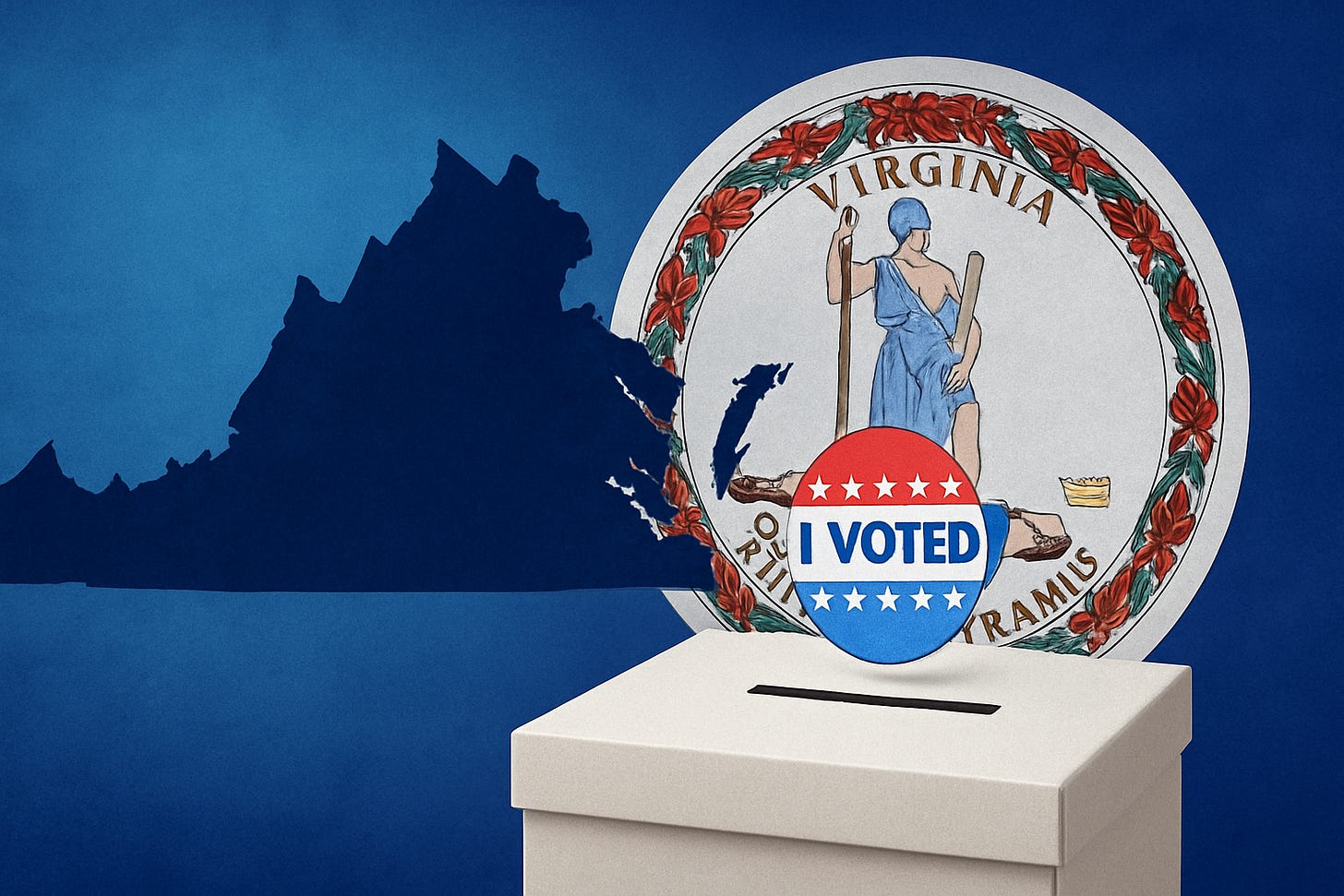
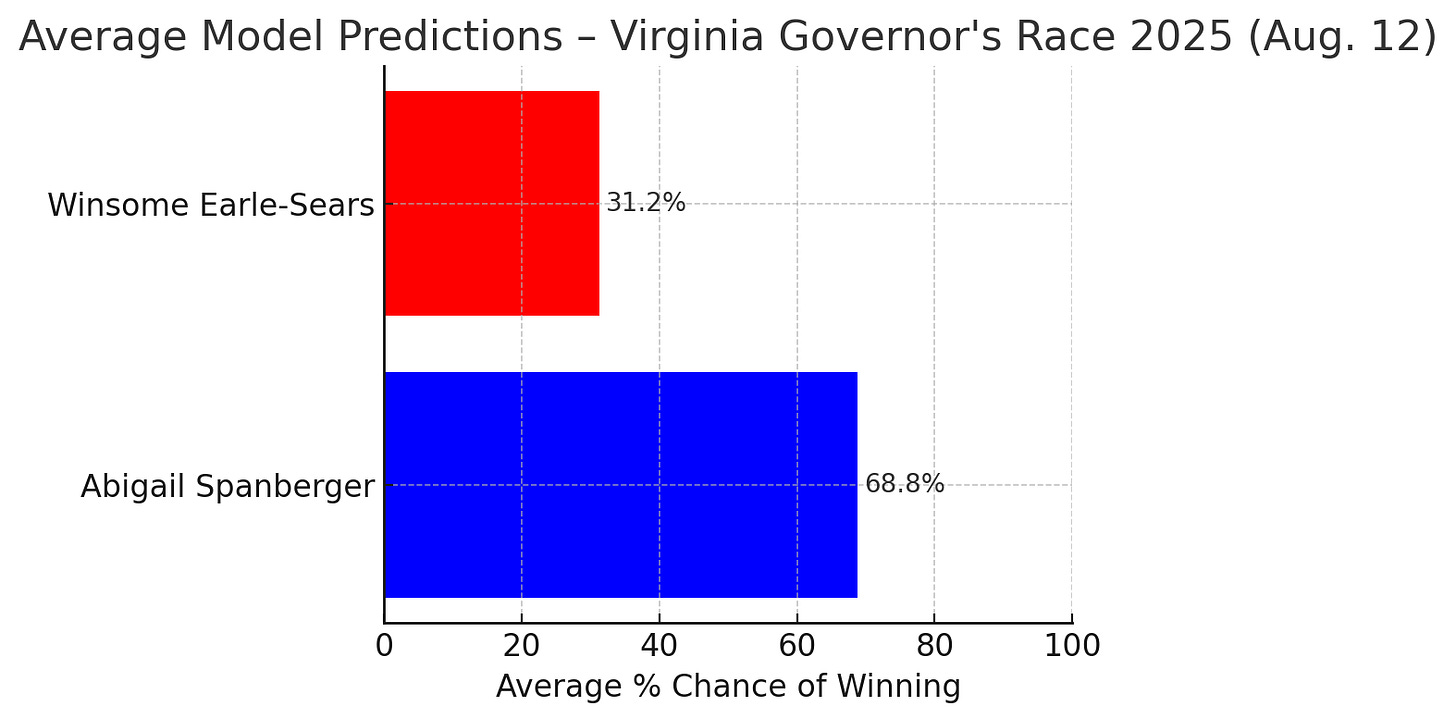
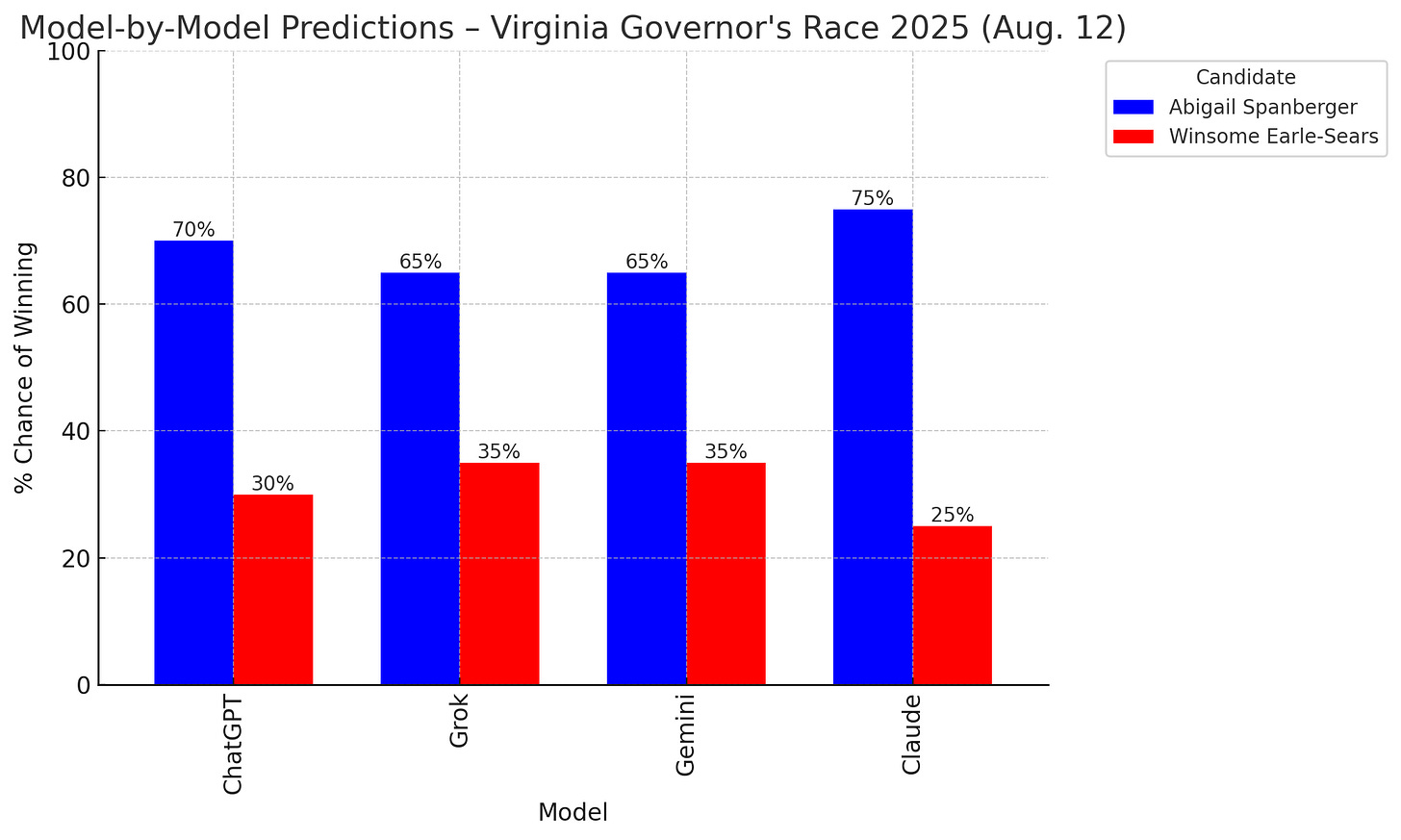
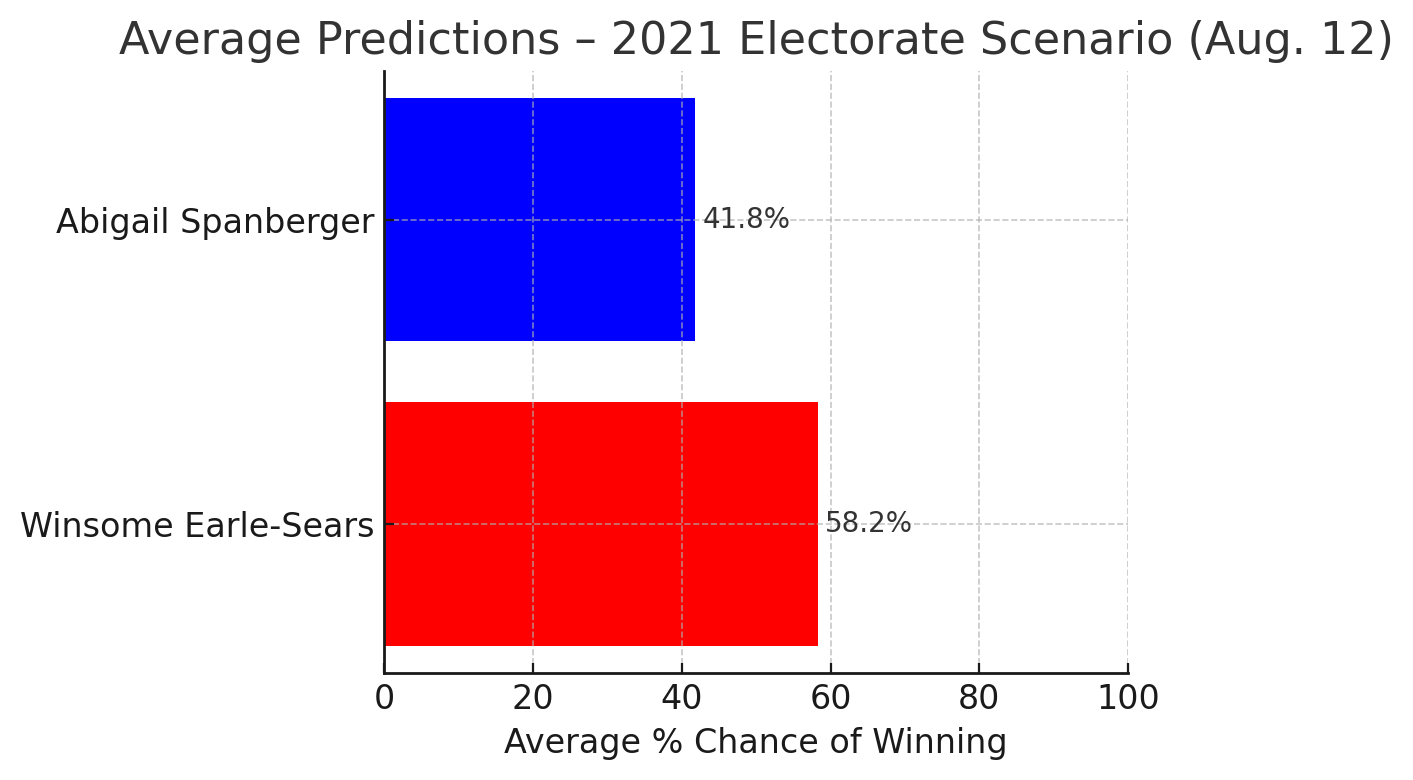
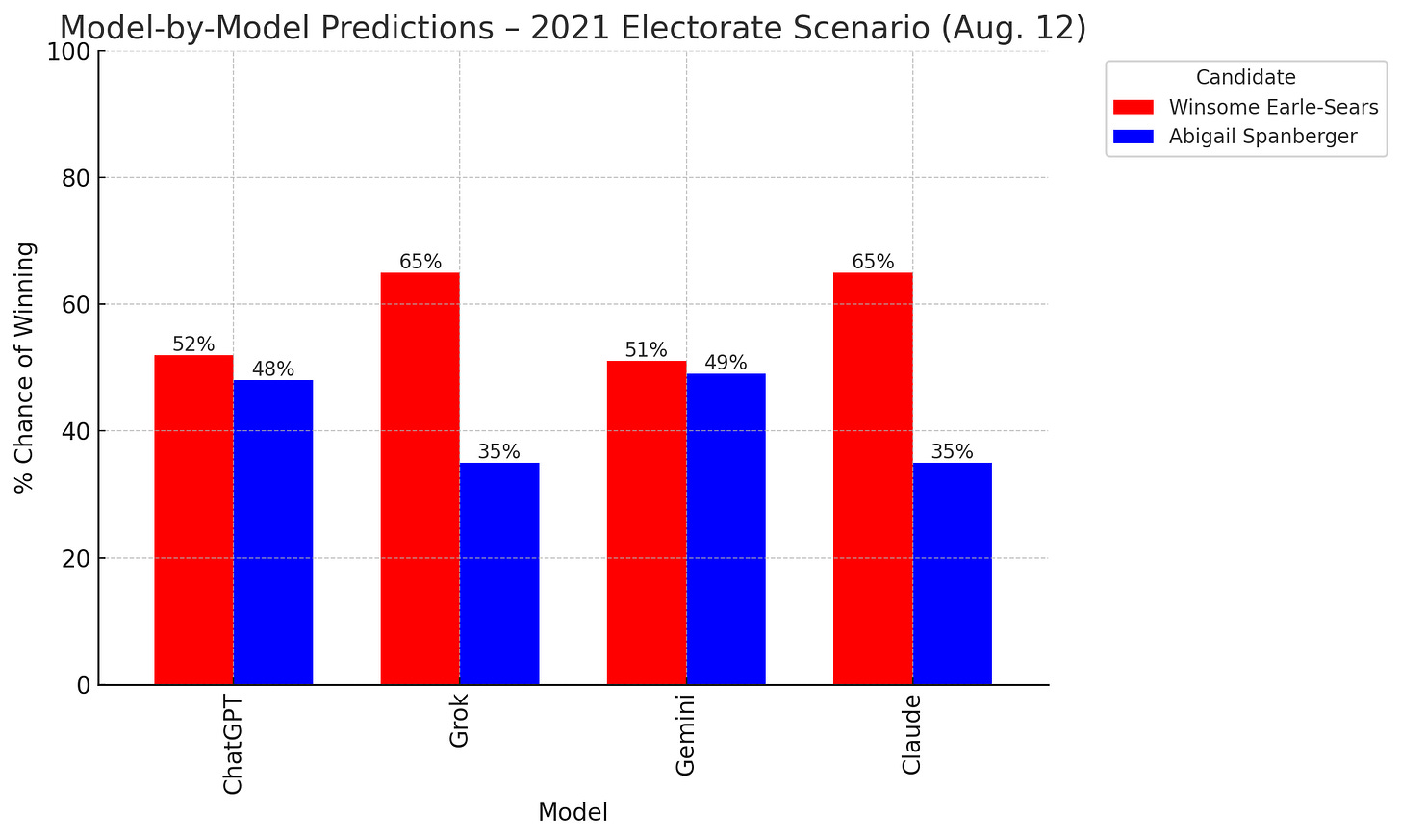
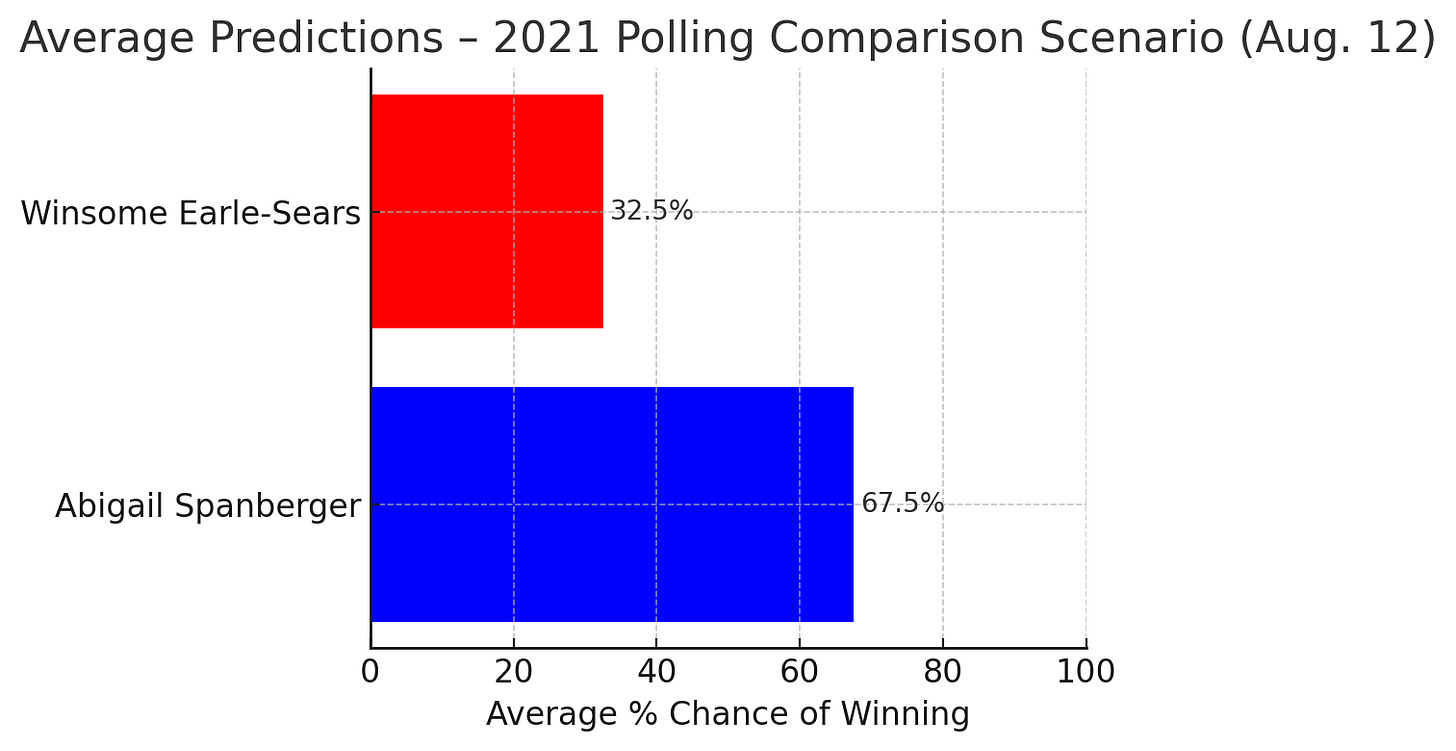
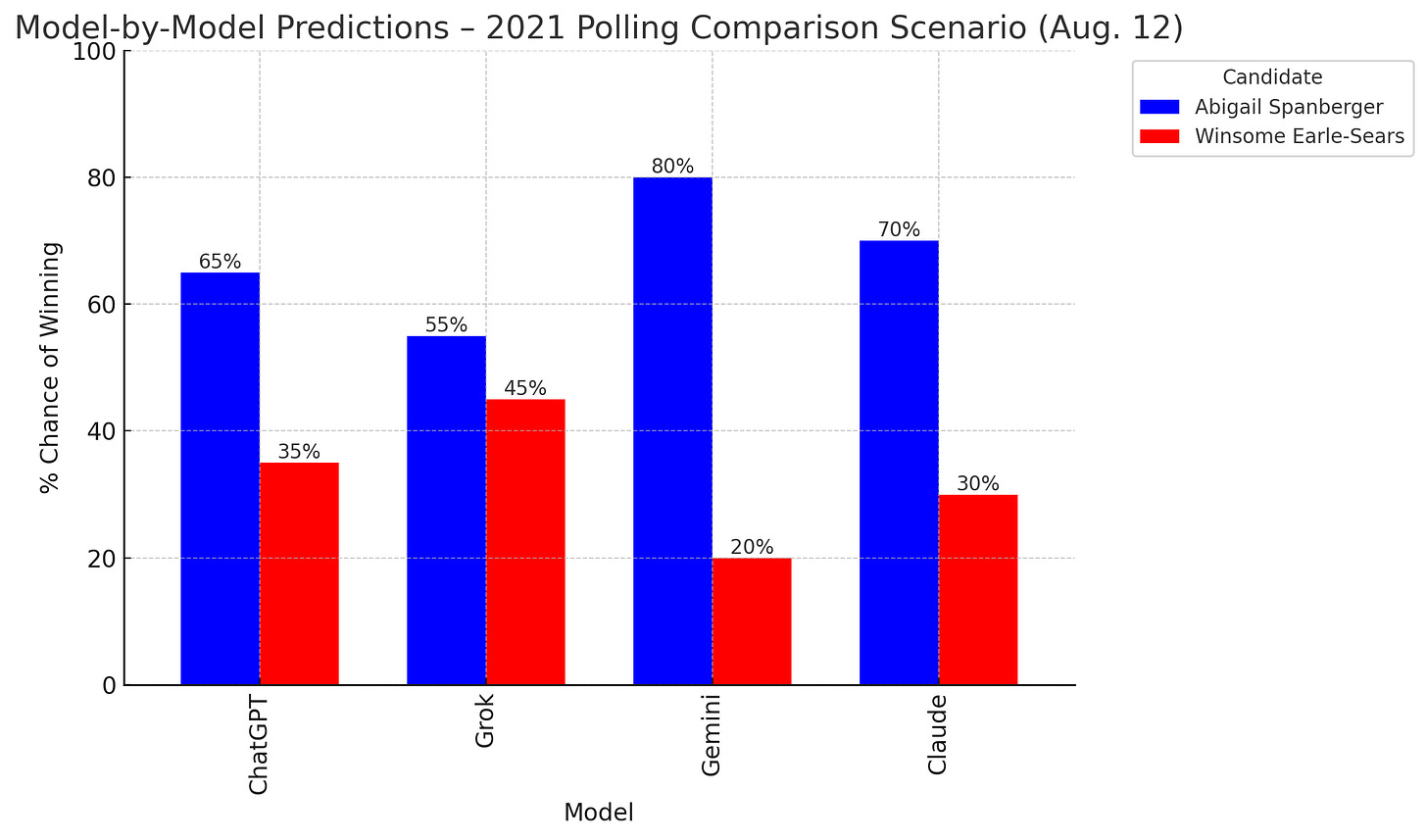
More back-of-the-napkin math to chew on, according to ChatGPT:
Estimated Win Probabilities (August 2021)
Terry McAuliffe (D): ~57% chance of winning
Glenn Youngkin (R): ~43% chance of winning
Youngkin would have had similar odds in August 2021, and he pushed forward to beat McAuliffe. Sears has an opportunity to rally, but it will take a strong campaign from now until Election Day.